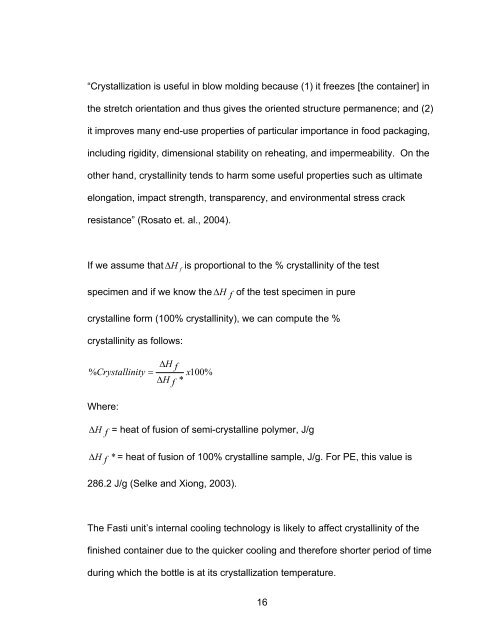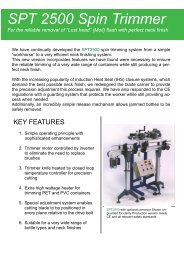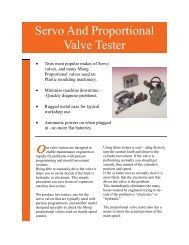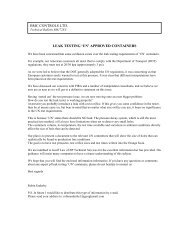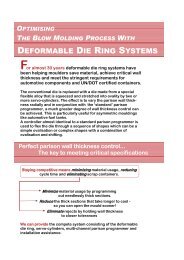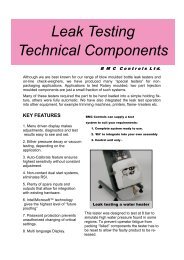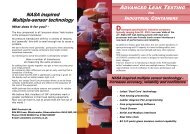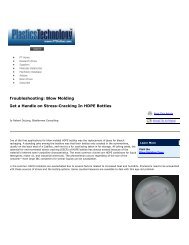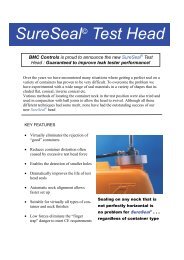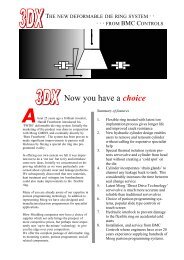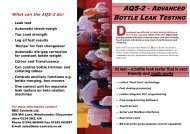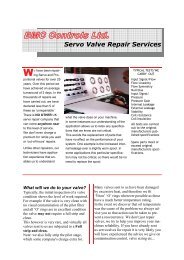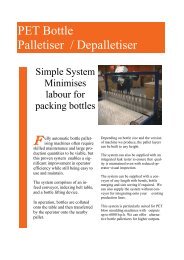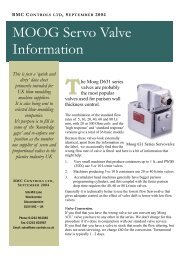EFFECTS OF EXTRUSION BLOW MOLDING INTERNAL COOLING ...
EFFECTS OF EXTRUSION BLOW MOLDING INTERNAL COOLING ...
EFFECTS OF EXTRUSION BLOW MOLDING INTERNAL COOLING ...
Create successful ePaper yourself
Turn your PDF publications into a flip-book with our unique Google optimized e-Paper software.
“Crystallization is useful in blow molding because (1) it freezes [the container] in<br />
the stretch orientation and thus gives the oriented structure permanence; and (2)<br />
it improves many end-use properties of particular importance in food packaging,<br />
including rigidity, dimensional stability on reheating, and impermeability. On the<br />
other hand, crystallinity tends to harm some useful properties such as ultimate<br />
elongation, impact strength, transparency, and environmental stress crack<br />
resistance” (Rosato et. al., 2004).<br />
If we assume that ∆H<br />
f<br />
is proportional to the % crystallinity of the test<br />
specimen and if we know the ∆H<br />
f<br />
of the test specimen in pure<br />
crystalline form (100% crystallinity), we can compute the %<br />
crystallinity as follows:<br />
∆H f<br />
% Crystallinity = x100%<br />
∆H f *<br />
Where:<br />
∆ H f<br />
∆ H f<br />
= heat of fusion of semi-crystalline polymer, J/g<br />
* = heat of fusion of 100% crystalline sample, J/g. For PE, this value is<br />
286.2 J/g (Selke and Xiong, 2003).<br />
The Fasti unit’s internal cooling technology is likely to affect crystallinity of the<br />
finished container due to the quicker cooling and therefore shorter period of time<br />
during which the bottle is at its crystallization temperature.<br />
16


